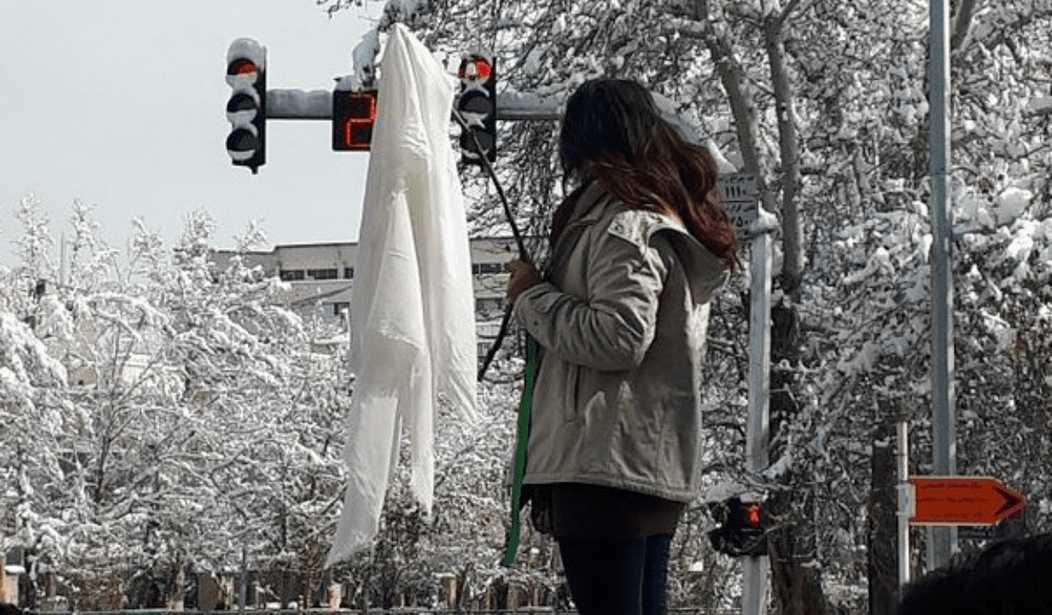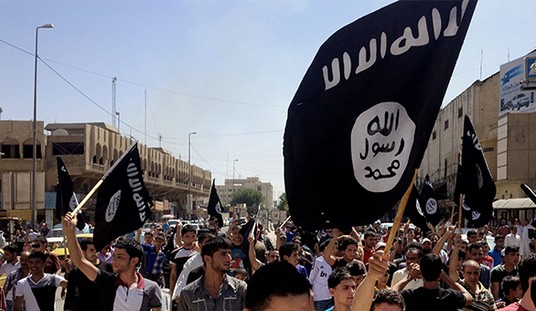The massive uprisings in Iran from earlier this year may be over, but women across the country are still protesting the state enforcement of the hijab. On Monday, at least six women removed their hijabs in an act of protest, and one was arrested in Tehran, reportedly on the very spot where another woman protested at the beginning of the uprising. Worse, two people attempting to film her protest also got arrested.
“I took my scarf off because I’m tired of our government telling me what to do with my body,” a 28-year-old protester reportedly told feminist author and New York Times columnist Mona Eltahawy.
“I took my scarf off because I’m tired of our government telling me what to do with my body,” 28yo woman protestor.
At least one of the 6 women protesting Monday was arrested by police, a shopkeeper who witnessed the arrest said. #Iran— Mona Eltahawy (@monaeltahawy) January 30, 2018
Eltahawy reported that six women stood on street corners with their hijabs waving in the wind. Photos of at least three women circulated on Twitter.
These two women are being hailed as heroes by many Iranians for protesting the compulsory hijab rule that has violated women's rights in Iran for nearly four decades. pic.twitter.com/qSFOZpOkrg
— Golnaz Esfandiari (@GEsfandiari) January 29, 2018
Another image surfacing of a woman in #Iran, waving her #hijab in protest. This is a growing movement within #IranianProtests where women are taking the lead in the fight for a #FreeIran pic.twitter.com/J7DupqEB7l
— Annika H Rothstein (@truthandfiction) January 30, 2018
— هادی ترابی (@haditorabii) January 29, 2018
On December 27, a woman later identified as 31-year-old Via Movahed became an international sensation after she stood atop a telecoms box in Tehran’s Enghelab Street. Enghelab means “Revolution” in Farsi.
As unrest spread across Iran, Movahed’s image spread online. Many Iranians, including men, changed their social media profile pictures to images inspired by her protest, and shared a hashtag that translates to “the girl of Enghelab Street,” or “the girl of Revolution Street.”
Interesting fact: The first woman protesting, -then anonymous- did it on “revolution” street. And she quickly got the title of “girl of the revolution street” this soon turned into the hashtag #دختران_انقلاب “girls of revolution” after others joined her.#دختران_خیابان_انقلاب
— Nima Fatemi (@mrphs) January 29, 2018
Iran’s most prominent human rights lawyer, Nasrin Sotoudeh, revealed Movahed’s identity and reported that she had been arrested. On Sunday, she announced on Facebook that Movahed had been released.
Sotoudeh told The Guardian that a woman appeared on the exact same telecoms box as Movahed at around 11 a.m. Monday. She protested for about ten minutes before getting arrested by plainclothes officers. Two other people filming her were also arrested, she said. It remained unclear whether these people remained detained on Monday evening.
Regarding the protest, Sotoudeh wrote, “Her message is clear, girls and women are fed up with forced [hijab]. Let women decide themselves about their own body.”
The second woman has been identified as Narges Hosseini. She wore a green wristband, perhaps referring to the 2009 Green revolution.
Reporters remarked on the bravery of Hosseini and the other women.
“These women are really brave. Taking off your Hijab on a busy street to make such a political statement could get you arrested, detained, and even fined or imprisoned in Iran,” Negar Mortazavi, an Iranian-American journalist for The Guardian, tweeted.
These women are really brave. Taking off your Hijab on a busy street to make such a political statement could get you arrested, detained, and even fined or imprisoned in Iran.
— Negar Mortazavi (@NegarMortazavi) January 29, 2018
“Forced hijab is the most visible symbol of oppression against women in Iran, that’s why fighting for freedom to wear or not to wear hijab is the first step towards full equality,” Masih Alinejad, an activist who runs the My Stealthy Freedom campaign, told The Guardian. “These women are not protesting against a piece of cloth, it’s about our identity, our dignity, and our freedom of choice. Our body, our choice.”
Even women who voluntarily choose to wear the hijab spoke out against the government enforcement. “I wear the chador. I chose to wear the hijab, it wasn’t forced on me by my family or the society, nor it was a work requirement,” Iranian woman Zahra Safyari tweeted. “I am happy with my choice but I am opposed to forced hijab and that’s why I appreciate the Girls of Enghelab Street. Religion and hijab should not be compulsory.”
من چادری ام.خودم انتخاب کردم که محجبه باشم،نه اجبار خانواده بود و نه جبر محیط یا شرایط کار.از انتخابم خیلی خوشحالم ولی با حجاب اجباری مخالفم و #دختران_خیابان_انقلاب رو تحسین میکنم.در دین و حجاب هیچ اجباری نباید باشد
— زهرا صفياري (@zahrasafyari) January 29, 2018
Another Iranian woman took the global interest in the issue with a grain of salt, however. “I’m cynical about outside interferences in the issue of hejab in Iran,” a woman reportedly told Bloomberg’s Golnar Motevalli. “These incidents are a domestic issue being pursued by women in Iran and part of something quite natural, it’s about making and expressing a demand.”
Finally: “I’m cynical about outside interferences in the issue of hejab in Iran. These incidents are a domestic issue being pursued by women in Iran and part of something quite natural, it's about making and expressing a demand.”
— Golnar Motevalli (@golnarM) January 30, 2018
She warned that these protests “are poorly understood and incorrectly interpreted” by foreign media, and that “certain groups want to co-opt them in their own name.” The woman insisted that “this isn’t a very new issue.”
It is important to remember that Iran’s history — and push for women’s rights — is different than the history in the West. These women are fighting for the freedom to choose whether or not to wear the hijab. Not all of them think of the Islamic practice as demeaning to women, but many of them strongly object to the government enforcing it. They are not advocating for Western feminist causes like “equal pay for equal work” or abortion on demand.
Iran had a much more free society before the Islamic Revolution in 1979. Women are arguably calling for a return to the freedom of the past, rather than an ideal feminism of the future. That said, these protests mark an important push against the regime, and they suggest that even while the uprising of earlier this month has died down, resentment against the forced religion of the regime still festers.








Join the conversation as a VIP Member